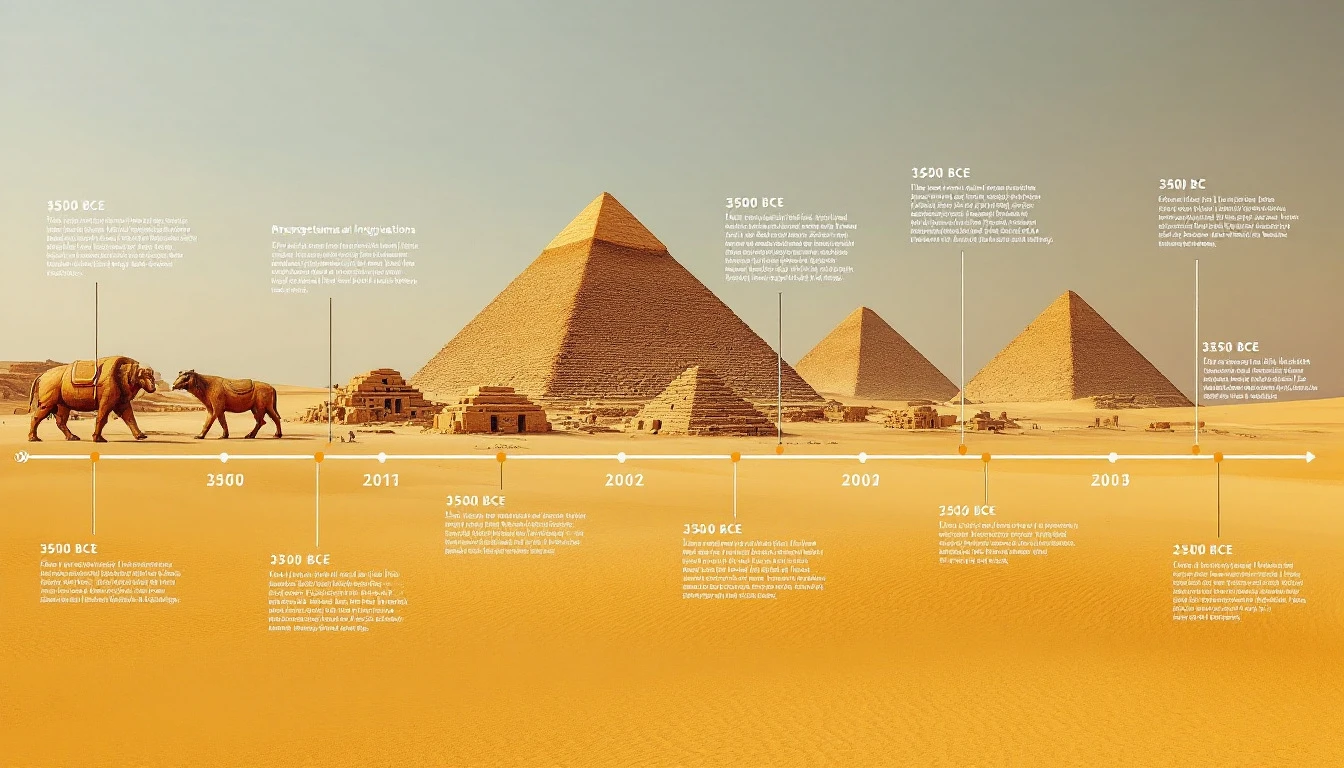
Want to learn how to create images like this one?
Check out our crash course in prompt engineering & AI art generation!
Vithrack
posted 8 months ago
49 views
0 comments
Build your timeline on the history of engineering,
combining images and texts with the year of each historical event in sequential order.
Eight key moments in the history of engineering ,
presented in a chronological timeline .
Each moment should include images,
the year,
and a description highlighting its historical significance.
Here are eight pivotal moments in engineering history for your timeline:
1.
Mesopotamia
(circa 3500 BCE)
Image: Include ruins of a ziggurat,
a depiction of the invention of the wheel,
or cuneiform writing.
Text:
3500 BCE – Mesopotamian Innovations
The development of the wheel ,
cuneiform writing ,
and irrigation systems marked a major leap in humanity’s ability to solve practical problems and organize society.
Event: Mesopotamian civilization pioneered foundational inventions that laid the groundwork for future advancements in transportation,
communication,
and agriculture.
2.
Ancient Egypt
(circa 3500 BCE)
Image: The Pyramids of Giza or Nile River irrigation systems.
Text:
3500 BCE – Monumental Engineering in Egypt
The construction of the pyramids
(e.g., Giza)
and advanced irrigation systems demonstrated sophisticated knowledge of mathematics,
geometry,
and labor organization.
Event: Ancient Egyptians achieved mastery in large-scale construction and water resource management.
3.
Roman Empire
(500 BCE – 476 CE)
Image: The Segovia Aqueduct or Roman roads.
Text:
500 BCE – 476 CE – Roman Infrastructure
A vast network of aqueducts,
roads,
and bridges built with concrete and arches revolutionized transportation,
trade,
and communication across the empire.
Event: Romans pioneered civil engineering,
creating durable infrastructure that shaped their society.
4.
Middle Ages
(476 CE – 1450 CE)
Image: A Gothic cathedral or medieval castle.
Text:
Middle Ages – Medieval Construction
The building of soaring cathedrals and fortified castles advanced structural design and military engineering in Europe.
Event: Despite perceptions of technological stagnation,
this era saw significant progress in construction and defensive engineering.
5.
Renaissance
(1450 CE – 1600 CE)
Image: Leonardo da Vinci’s designs
(e.g., flying machines)
or the Florence Cathedral dome .
Text:
15th–16th Centuries – Renaissance Innovation
Visionaries like Leonardo da Vinci conceptualized groundbreaking machines,
while new techniques like domes revitalized engineering and design.
Event: The Renaissance sparked creativity and laid foundations for modern engineering through mechanics and design exploration.
6.
First Industrial Revolution
(1760–1840)
Image: A steam engine or mechanical loom.
Text:
1760–1840 – The Steam Engine
James Watt’s refined steam engine powered factories,
locomotives,
and ships,
transforming production and transportation.
Event: This revolution shifted society toward mechanized manufacturing,
driven by new energy sources and machinery.
7.
Second Industrial Revolution
(1840–1914)
Image: Assembly line
(e.g., Ford’s Model T)
or early electrification systems.
Text:
1840–1914 – Electrification and Mass Production
Electricity ,
steel production ,
and assembly lines
(e.g., Henry Ford’s)
revolutionized industry and daily life.
Event: Advances in electricity,
chemistry,
and mass production reshaped society during this transformative period.
8.
20th Century – Digital Age
(1900–Present)
Image: A modern computer ,
industrial robot ,
or AI visualization.
Text:
20th–21st Centuries – The Digital Revolution
Computing ,
digital technology ,
automation ,
and AI have transformed communication,
medicine,
manufacturing,
and space exploration.
Event: The digital era has accelerated technological innovation,
with engineering driving profound changes in how we live and work.








